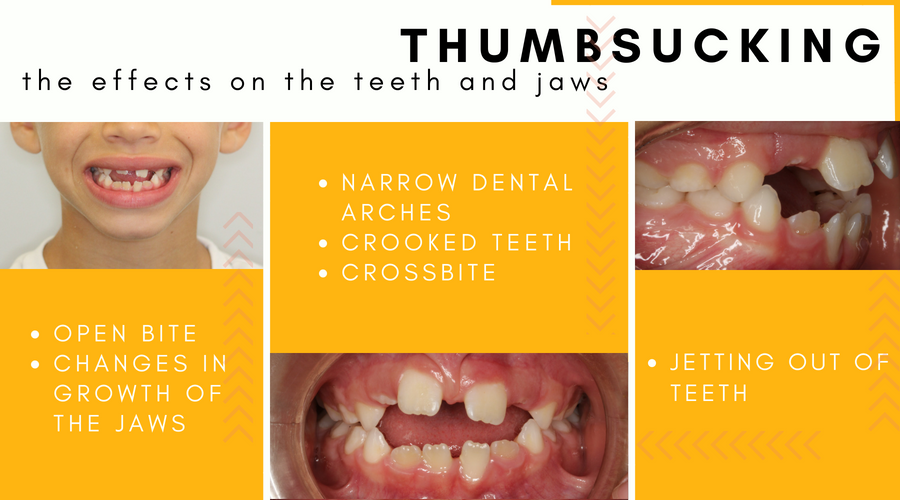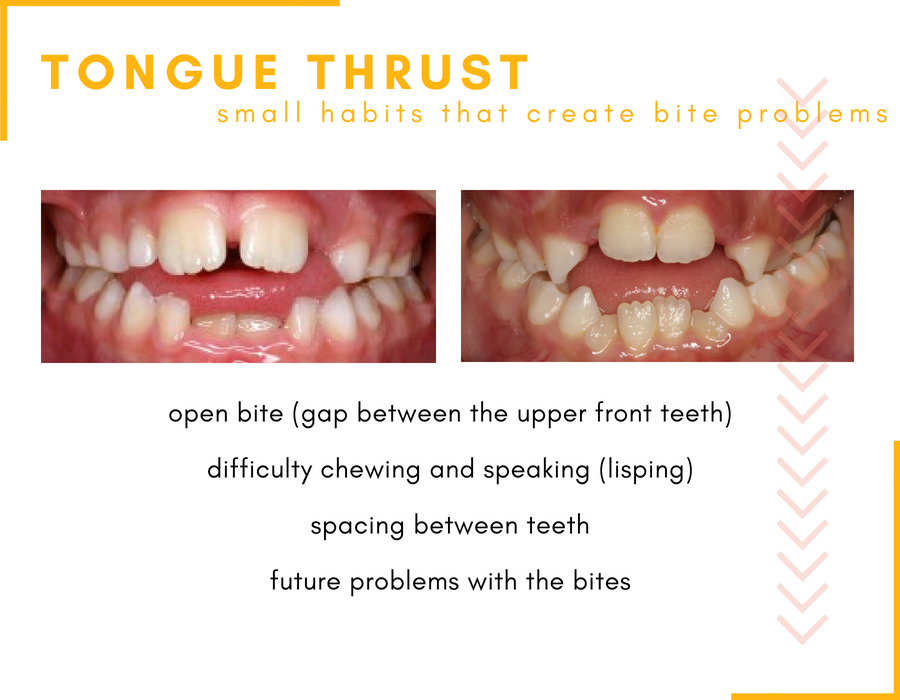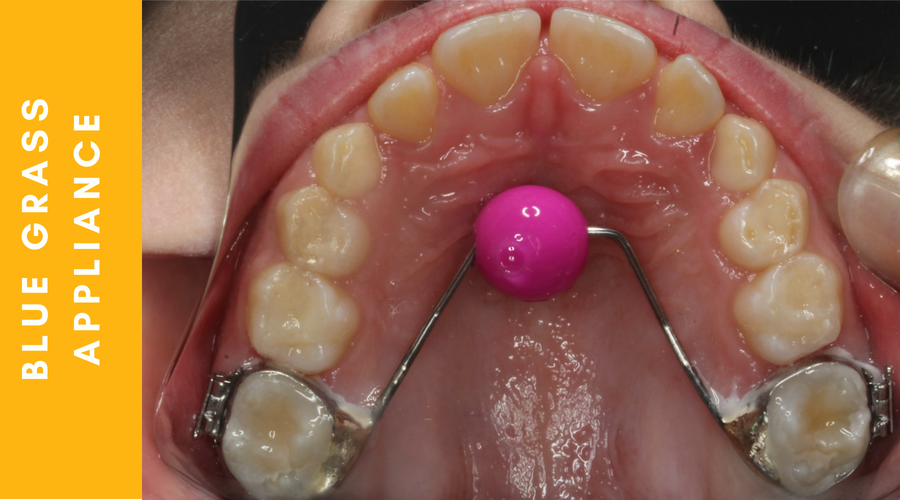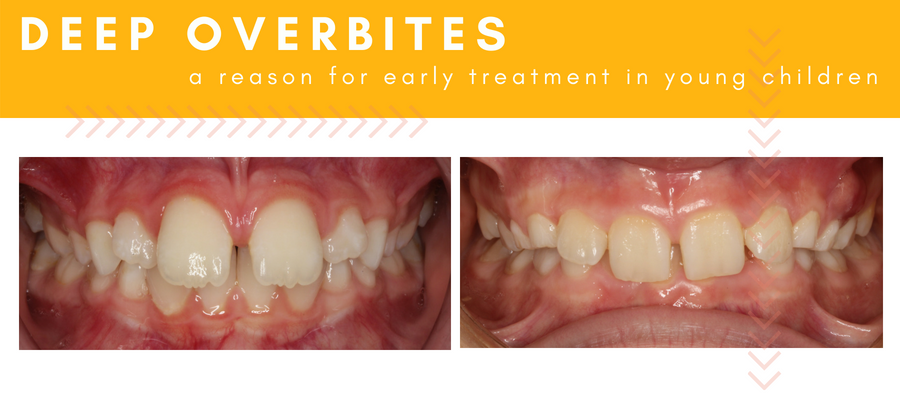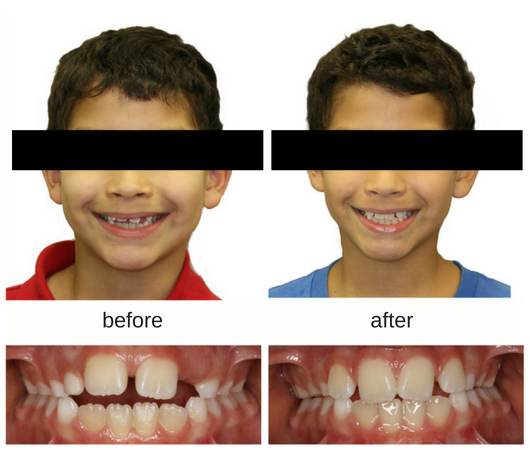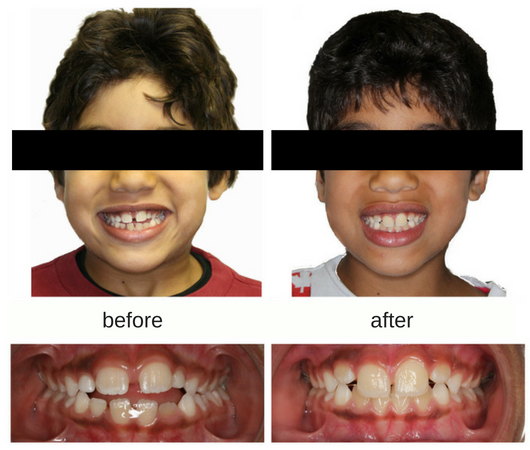Habits and Other Problems
Thumb Sucking / Finger Sucking
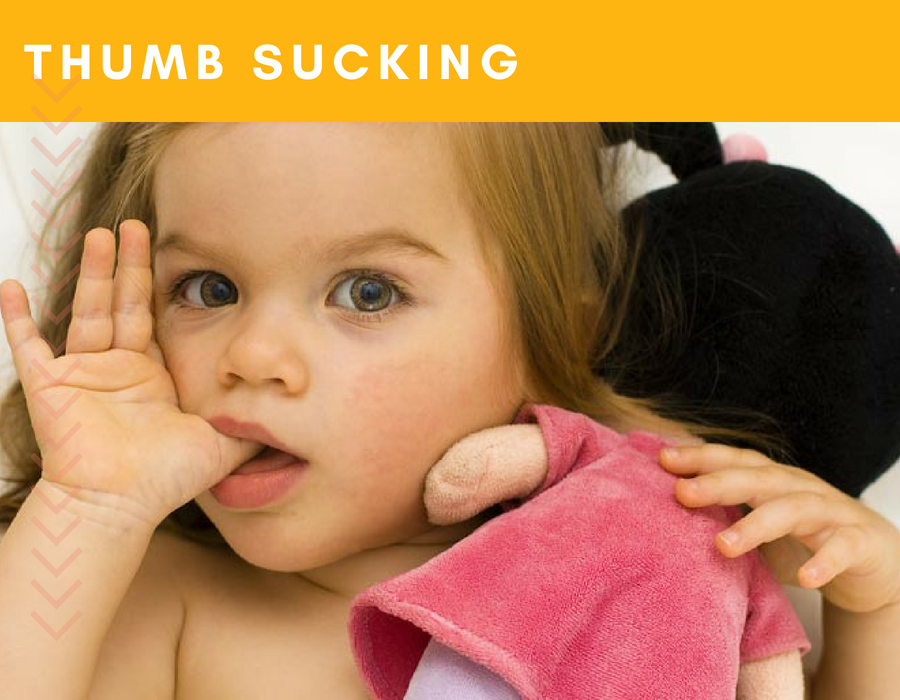
When should you start getting worried about thumb sucking?
Thumb-sucking habits are normal reflexes from birth to three years of age. The majority of children naturally outgrow their thumb-sucking habit between two and four years of age. We aim to encourage halting the habit by age three. However, habits that persist after the age of five or six risk may have oral complications – this is why it is important to bring your child in for an assessment to an orthodontist by the age of 7.
Side-effects of thumb/finger sucking:
- Crooked teeth
- Increased jetting out of the teeth
- Posterior crossbite (teeth don’t fit or bite properly in the back)
- Anterior open bite (teeth don’t meet in the front)
- Narrowed Arches
- Impacted Teeth
- Changes in growth of the jaws.
How do you manage a patient with a finger sucking habit:
The “palatal crib” appliance usually stops thumb sucking immediately and is placed for six months to confirm discontinuation of the habit. The appliance prevents the thumb from reaching the roof of the mouth which reduces gratification and breaks the habit quickly.
Pacifiers are not a better alternative to thumb-sucking. They can affect the teeth essentially the same way as sucking fingers and thumbs, and sometimes have worse oral complications. However, pacifier use can be more easily broken than the thumb or finger habit. If you have concerns about thumb sucking or use of a pacifier, consult Dr. Virdee at the Port Credit orthodontist office or at the Sudbury orthodontist office.
Here are a few suggestions to help stop the habits:
- Children may suck their thumbs when they feel insecure. Work on correcting the cause of anxiety, instead of the thumb sucking habit. Children who are sucking for comfort will feel less of a need when their parents provide comfort.
- Reward children when they refrain from sucking. Use a Sticker Chart on a calendar.
- Give verbal praise to the child. Encouragement from siblings helps tremendously.
- If the habit is accompanied by a favored stuffed animal or “blankie,” then setting a date to quit along with selling the “blankie” can help reinforce halting the habit.
- Dr. Virdee can encourage children to stop the habit and explain what could happen if they continue.
- Mavala Stop is a bitter nail polish that serves as a reminder.
- If these modalities fail, remind the children of their habit by bandaging the thumb or putting a sock on the hand at night. A Tguard may also be helpful.
- After several approaches, Dr. Virdee may recommend the use of a mouth appliance if the child desires to quit the habit.
Tongue Thrusting
What is tongue thrusting?
Tongue thrusting is a habit of placing the tongue in the wrong position during swallowing, either too far forward or to the sides. Sometimes a tongue thrust can occur due to an involuntary or nervous habit which is often difficult to correct. It is estimated that every 24 hours, you swallow a total of 1,200 to 2,000 times, with about four pounds of pressure per swallow. With this type of pressure, it is no wonder that the tongue can sometimes be the cause of misalignment issues or malocclusion (bad bite) issues.
Causes of tongue thrusting:
- Thumb sucking/pacifier use
- Mouth breathing due to nasal congestion or obstruction, allergies
- Difficulty swallowing (due to large adenoids, frequent sore throats or tonsils)
- Large tongue
- Muscular, neurological or other physiological abnormalities
- Being tongue tied
Complications of tongue thrusting:
- Open bite – in ability of the teeth to meet in the front due to position of the tongue
- Spacing between the upper and lower front teeth as they are pushed out by the tongue
- Difficulty chewing
- Speech problems including lisping
- Development of bad bites (malocclusion)
At what age does a child usually exhibit a tongue-thrust swallowing pattern?
A child exhibits a tongue-thrust pattern from birth, because it is an infantile swallowing pattern. It is acceptable to have this swallowing pattern up to the age of four.
Most children will outgrow the infantile pattern and develop the mature pattern of swallowing; in other words, they will not develop a problematic tongue thrust. If the child has not naturally outgrown the pattern by age four, the thrust is strengthened, becomes an issue, and will require a training program to correct the thrusting pattern. Any habits must be corrected prior to the initiation of full orthodontic treatment to minimize the side effects (spacing, speech problems, open bite) of the habit to the dentition after braces are removed.
How do you correct a Tongue thrust.
As a habit, tongue thrusting can be corrected using myofunctional therapy or early orthodontic treatment using a tongue crib.
Myofunctional Therapy uses exercises to re-educate the tongue muscles and is similar to physical therapy with in-office visits and home exercises. The length of therapy is based on the patient’s co-operation and dedication
Orthodontic appliances can also help to retrain the tongue such as a tongue crib or a Blue Grass appliance. These appliances act as a reminder and help to retrain the tongue. Ideally these appliances should be in place for approximately 6-8 months.
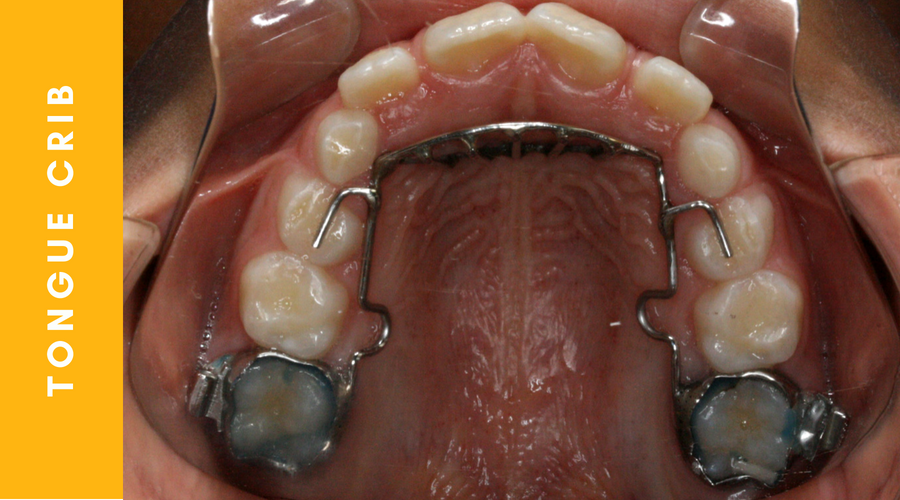
Deep Overbite
A deep overbite is a condition that results when the upper front teeth excessively overlap the lower front teeth. For teeth to be healthy and functional, the upper front teeth should cover the lower front teeth by approximately 20% with the lower front teeth lightly touching the back of the upper front teeth.
Complications of a deep overbite:
- Difficulty chewing
- Trauma to the tissues of the mouth
- Splaying or jetting of the upper front teeth
- Excessive wear of the top edges of the lower front teeth
- TMJ issues
Why should we treat deep overbites early?
Most children who will visit our Sudbury orthodontist or Port Credit Orthodontist officse will present with a deep overbite and still have some of their baby teeth present. At this stage, only when the deep overbite is excessive and causing complications listed above, will Dr. Virdee recommend treatment. Side-effects and complications from an overbite can be avoided when it is treated early. This means that future orthodontic treatment is shorter and less complicated for the patient.
How are overbites treated?
We usually recommend an appliance called an Anterior bite plate. This appliance can be fixed to the back molars or it can be removable. Dr. Virdee will recommend the appliance that is best for your child based on their comfort and ability to wear either appliance.
Video of appliance: the anterior bite plate appliance prevents the back teeth from touching. The gap between the upper and lower back teeth eventually closes as these teeth erupt. In this way, we passively correct the deep overbite by allowing mother nature to assist us. – Missing video
If you notice any of the above functional issues with your child, call our office for a complimentary consultation. The best thing you can do for your child is have an orthodontic assessment early to avoid complicated treatment in the future.
Smile Gallery
-

Keeley
-

Aaron
-

Alejandro
-

Keeley
-

Aaron
Get a Free Consultation
Make an appointment today and start your child’s journey to a healthy and beautiful smile with Hometown Orthodontics.




